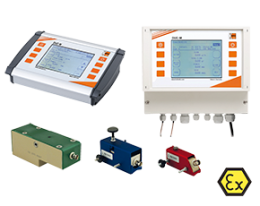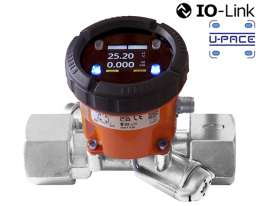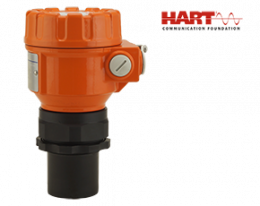KOBOLD Instruments Inc • 1801 Parkway View Drive • 15205 Pittsburgh, PA • Tel: +1 412 788 2830 • E-mail: Please activate JavaScript • visit koboldusa.com
 Ultrasonic
Ultrasonic

Frequently Asked Questions – Ultrasonic Flow Meter
How do ultrasonic flow meters work?
Sensors emit and receive acoustic signals (ultrasonic waves) in the ultrasonic range. The distance between the sensors (walking distance) is basically known. The speed of sound in air is about 340 m/s. If there are stationary media between the sensors, the speed of sound changes, for example 1500 m/s in water. The sound still needs the same time in both directions to travel the distance between the sensors. If the medium now begins to move, the transit time for the sound waves decreases with the flow. For the sound waves moving against the flow, it increases. The difference in transit time is converted into the flow rate via electronics, displayed and output as a signal for further processing.
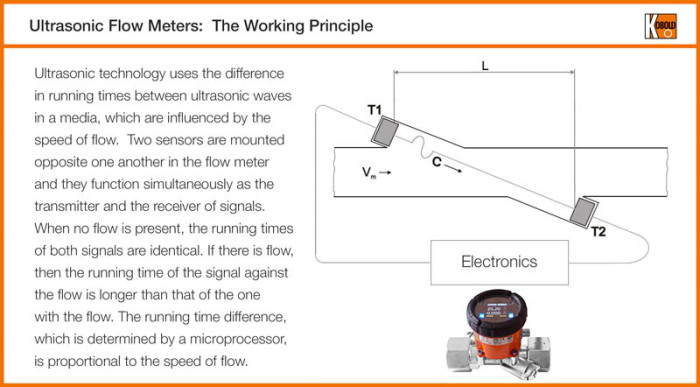
What are the advantages of ultrasonic flow meters?
Ultrasonic flow meters offer many advantages: they have no moving parts that could wear out. They are virtually maintenance-free and have low operating costs. They offer a large measuring range. They measure non-conductive media and are an excellent complement to electromagnetic flowmeters that require conductive liquids to function properly. They generally have a high degree of accuracy. You can measure more accurately at low flow rates than other flow meters. They only cause a small drop in pressure in piping systems. They can be used for a variety of water-like and viscous media.
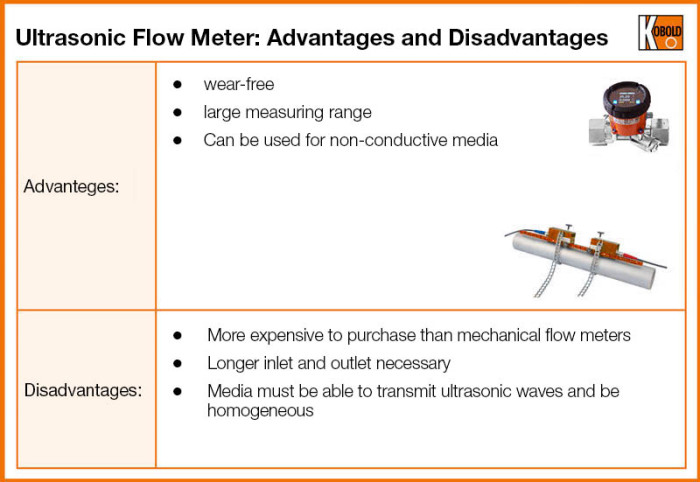
What are the disadvantages of ultrasonic flow meters?
Ultrasonic flowmeters, like any high-tech device, also have limitations. The higher precision and robustness compared to other technologies are reflected in the purchase price. Due to their compact design, they are more expensive to repair in the event of damage. They require homogeneous media and straight pipe runs (inlet, outlet) to ensure a flow profile conducive to the ultrasonic operating principle. They do not work with fluids that do not transmit ultrasonic waves, such as heavy slurries. Finally, the accuracy of ultrasonic flowmeters can be compromised at very low flow rates.
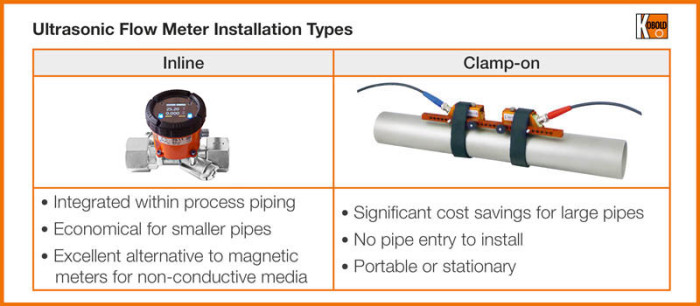
What are the fundamental differences between the designs?
When someone thinks of ultrasonic flowmeters, they usually mean the portable clamp-on versions (Kobold model designation: DUC), which have a number of advantages over the permanently installed inline versions (Kobold model designation: DUK). Although clamp-on models are not a new development per se, these designs have already been used in the past using the measuring principle, but they have now gained great importance in plant construction. Since they can be set up temporarily at the time of measurement and then dismantled again afterwards, they are considered to be extremely flexible. Other areas of application and regular users of clamp-on versions are areas such as waste water treatment, heating engineering, port technology (loading and unloading of ships).
What do I have to consider when installing ultrasonic flow meters?
Follow the manufacturer's instructions in the technical documentation. The following information can only provide a rough overview for purchasing and planning decisions.
The following information can only provide a rough overview for purchasing and planning decisions.
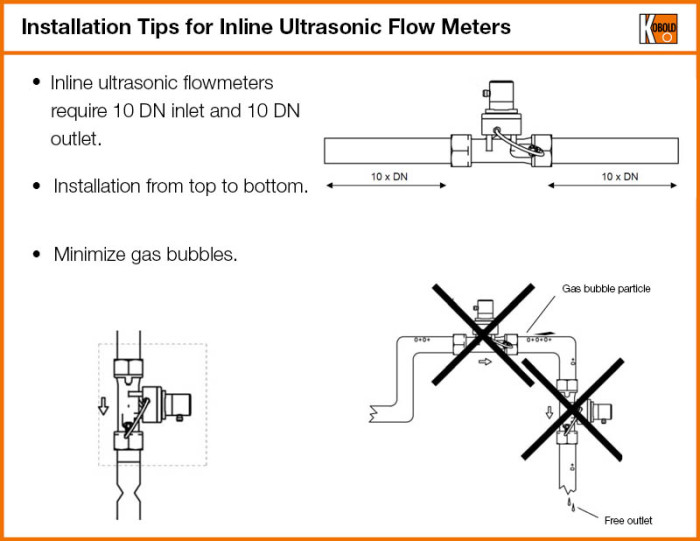

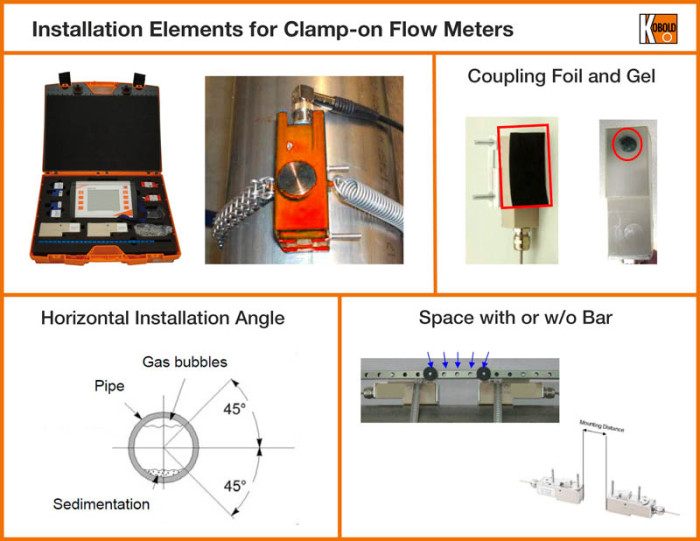
Who Invented the Ultrasonic Flow Meter?
The Japanese physicist Shigeo Satomura first used ultrasound for industrial purposes in 1955, which marked the beginning of the triumphant advance of this new technology. In 1959, he was the first scientist to carry out medical analyses using ultrasound; he initially examined the flow behaviour of human blood in veins and arteries using the Doppler effect. Later, the integration of powerful electronics began, and with it the cross-sectoral dissemination began.
Where are ultrasonic flow meters used in power plants?
Ultrasonic flow meters are used in main cooling and auxiliary cooling circuits, further in district heating, for pump protection and for condensate and feed water measurements.
Where are ultrasonic flow meters used in water management?
Ultrasonic flow meters are used in waste water management (sewage treatment plants), in drinking water networks, for leak detection and consumption measurements.
Where are ultrasonic flow meters used in facility management?
Ultrasonic flow meters are used in refrigeration systems, air conditioning, and energy optimization.
Where are ultrasonic flowmeters used in chemistry?
Ultrasonic flow meters are also used in the petrochemical industry (crude oil, light oil), when dealing with aggressive and toxic media, and when measuring service and waste water.
Where are ultrasonic flow meters used in the food industry?
Ultrasonic flow meters are used in beverage production to ensure hygienically perfect media and to measure the quantity of heat.
Up to which flow velocities are ultrasonic flow meters used?
The portable clamp-on ultrasonic flow meter (model name at Kobold: DUC) can handle flow velocities of up to 30 m/s.
Are there any other measurement methods apart from the runtime difference method?
In the early years of ultrasonic measurement, the use of the Doppler effect was very common. Today, this measurement method is only used in niche areas, e.g. B. medicine or radar measurement.
How accurate are ultrasonic flow meters?
Compared to technologies using other operating principles, ultrasonic flowmeters deliver consistently excellent accuracy. The permanently installed inline ultrasonic flow meter (Kobold model designation: DUK) achieves a measurement accuracy of 0.7% of reading + 0.7% of full scale. Ultrasonic flowmeters have a very wide turndown ratio, which correctly represents a wide range of flow rates within a single meter. For example, our DUK inline ultrasonic flow meter delivers one of the industry's best range spans (turndown ratio) at 250:1. The portable clamp-on ultrasonic flow meter (Kobold model designation: DUC) achieves a measurement accuracy of 1% of reading.
How Fast Are Ultrasonic Flow Meters?
The permanently installed ultrasonic flow meter (model designation at Kobold: DUK) achieves a response time of less than one second.
Up to what sizes do ultrasonic flow meters work?
The portable clamp-on ultrasonic flow meter (model designation at Kobold: DUC) is suitable for nominal pipe sizes up to DN 6000.
Can I also use the ultrasonic flowmeter for different media?
The permanently installed ultrasonic flow meter (model designation at Kobold: DUK) is factory-set to water as standard. With the new additional option C3T0 from Kobold, a file with the new media data can easily be loaded into the compact electronics via a USB cable.
Which outputs do ultrasonic flowmeters have?
The permanently installed ultrasonic flow meter (model designation at Kobold: DUK) can be equipped with a switching, frequency or analogue output. In addition, compact electronics are available, which include a digital display, a switching and analogue output. The portable clamp-on ultrasonic flowmeter (model designation at Kobold: DUC) has outputs 2x 4 - 20 mA, pulse, micro USB, relay, RS232, RS485, counter.
Which languages are shown on the display of the portable clamp-on ultrasonic flow meter (model designation at Kobold: DUC)?
In addition to German, language packs in English, French, Russian or Chinese are available.
I need an engineer for the portable clamp-on ultrasonic flow meter (model designation at Kobold: DUC)? Can you send an engineer to our site?
We are happy to help and advise you! Visit our website www.kobold.com. Call us or send us an email.
What connections do ultrasonic flowmeters have?
The permanently installed inline ultrasonic flow meter (model designation at Kobold: DUK) is available with the imperial connections G1/2 G3/4 G1 G1½ G2 G3 and NPT IG on customer request.
For which temperatures are ultrasonic flow meters suitable?
The permanently installed inline ultrasonic flow meter (model designation at Kobold: DUK) requires media temperatures between -20 and +90 °C. The device works in ambient temperatures between -20 and +70 °C. The portable clamp-on ultrasonic flow meter (model designation at Kobold: DUC) works with medium temperatures between -40 and +150 °C.
What pressures are ultrasonic flow meters suitable for?
The permanently installed ultrasonic flow meter (model designation at Kobold: DUK) requires media pressures between 0 and 16 bar. Since the portable clamp-on ultrasonic flow meter (model designation at Kobold: DUC) is simply placed on the existing pipe, there are no pressure restrictions with the DUC.
What IP code (ingress protection code) do ultrasonic flowmeters have?
The permanently installed ultrasonic flow meter (model designation at Kobold: DUK) has protection class IP code 65, i.e. it is dust-tight and protected against water. The ultrasonic transducers of portable clamp-on ultrasonic flow meter (model designation at Kobold: DUC) have protection class IP 68, i.e. they are dust-tight and protected against permanent immersion in water.
What pressure loss do ultrasonic flowmeters generate?
The permanently installed ultrasonic flow meter (model designation at Kobold: DUK) generates a maximum pressure loss of 150mbar. Since the portable clamp-on ultrasonic flow meter (model designation at Kobold: DUC) is merely placed on the existing pipe, the DUC does not generate any pressure loss.
What materials are ultrasonic flow meters made of?
The permanently installed ultrasonic flowmeter (model designation at Kobold: DUK) is made of brass or stainless steel at the customer's request.
How to choose an ultrasonic flow meter?
We will be happy to help and advise you on your selection! Visit our website www.kobold.com. Call us or send us an email.
Are Ultrasonic Flow Meters ATEX Approved for Hazardous Areas?
ATEX approval is selectable as an option. Call us or send us an email.
I need urgent technical help. How can I get in contact with you?
We're here to help! Call us or send us an email.

